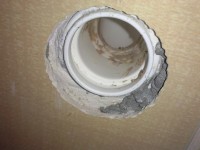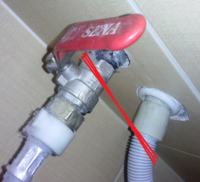Hello,
Today my washing machine spilled water - the drain hose fell out. My question is, how can this contraption be reconnected? The drain hose is just pushed into the hole. Is it correct? I'm afraid that if I leave it like that, I will flood the bathroom again ...
Second thing: why did the snake fly out? Was it too weakly attached, or is there some other reason?
I attach some photos.
Thank you in advance for your help.
Today my washing machine spilled water - the drain hose fell out. My question is, how can this contraption be reconnected? The drain hose is just pushed into the hole. Is it correct? I'm afraid that if I leave it like that, I will flood the bathroom again ...
Second thing: why did the snake fly out? Was it too weakly attached, or is there some other reason?
I attach some photos.
Thank you in advance for your help.









